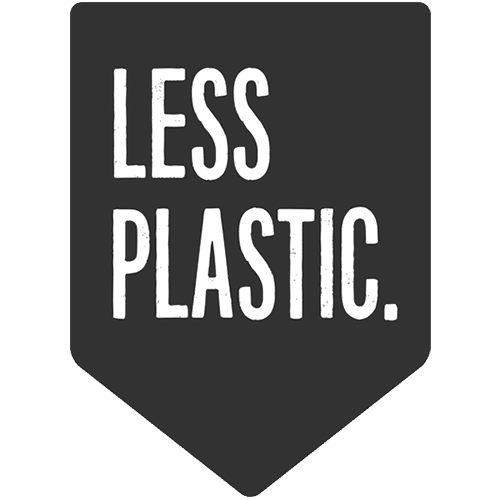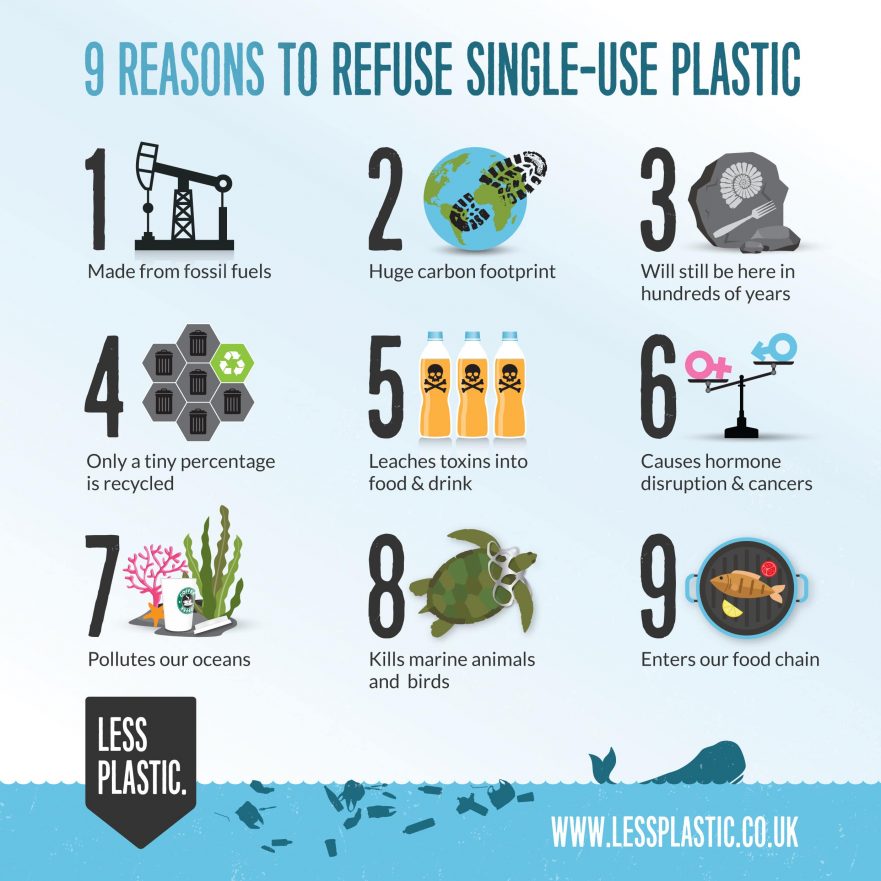Share this Post
Single-use plastic is everywhere. In a matter of mere decades, it has seeped into every corner of our lives.
We are addicted to the convenience of single-use plastic.
Although, when you step back to consider this, it’s astounding how we think it’s normal (for the average person) to buy a single-use plastic water bottle, take-away coffee cup, lunch wrapped in disposable plastic packaging, and possibly a plastic bag – EVERY day!
Think of the immense quantities of plastic that are required to feed that addiction over the years, whether it’s in your household, your town, your country, or globally… it’s truly mind boggling!
Fossil fuels take millions of years to form, then they are mined and manufactured into single-use plastic items, and shipped to where they are needed (each stage bringing its own environmental impacts) simply to be used for a couple of minutes before being discarded.
What happens to single-use plastic after we throw it away?
When we choose an action, we choose its consequences.
We cannot escape the consequences of throwing away vast quantities of a material that takes hundreds of years to break down.
Our planet is not as large as we think it is. We now share it with 7 billion people, the majority of whom are producing plastic waste at an alarming rate.
We need to choose more sustainable alternatives to ‘disposable’ plastic.
Walk along any beach on the planet, no matter how remote, and you will be reminded of the consequences of our throw-away culture as each tide delivers a fresh batch of plastic to litter our beautiful shorelines.
Not only is this a blight on our natural landscapes, but it also causes untold suffering among marine birds and wildlife who mistake ocean plastic for food, or become entangled in it.
We will never know the exact toll of birds and animals that fall victim to our plastic addiction, but images of rotting albatross carcases on remote Pacific islands with their plastic stomach innards still intact (and therefore ready to be eaten by the next generation of albatrosses) indicate we have only seen the tip of the iceberg.
Out at sea, the problem is even worse. You have probably heard of the Great Pacific Garbage Patch, however today ocean scientists say that image of a floating island of rubbish is outdated. They have now discovered five separate ocean gyres (so far). Five enormous swirling smogs of tiny toxic plastic fragments that have been broken down by the waves, sunlight and wind.
This stuff is impossible to clean up. Surveys have found ocean microplastic to outnumber plankton (the base of the entire marine food web) by 6 to 1, and this number is growing exponentially as our plastic addiction shows no signs of abating.
Plastic smog may also affect how much oxygen marine plants produce and how much carbon dioxide they absorb. Given that 70% of our oxygen comes from marine plants, this is an extremely serious threat to our survival.
Another issue with microplastic is that it is perfectly-sized to be eaten by fish, where it then enters the human food chain, along with a side serving of toxicity.
We don’t yet know how harmful eating fish that has consumed plastic is for human health, but it seems wise to conclude that there will be consequences for this too.
Plastic has only been in mass production for around 50 years, so we are in completely unchartered territory. Only time will tell the full impact of our addiction to single-use plastic.
What are the solutions?
The solutions to plastic pollution start with awareness.
Start shopping consciously. Be aware of the kind of world you are voting for every time you make a purchase. When you buy an item, you create a demand for it, which will be met by creating more of them.
Do you want a world with more single-use plastic water bottles, bags, coffee cups, sandwich packaging, plastic bags… floating around the ocean, or do you think there is enough already?
If we don’t see a massive shift in our collective behaviour very soon, the problem will compound causing unforeseen consequences that are impossible to predict at this stage.
Food and drink are two of our most important requirements for survival, but we don’t need it packaged in single-use plastic for the short term convenience of having it immediately.
If you must have food and drink on-the-go, there are plenty of reusable solutions available.
See our 9 tips for living with less plastic for some ideas and inspiration to get you started on the road to refusing single-use plastic.
You can also stop plastic pollution from reaching the ocean by picking up litter, especially near waterways and on beaches.
Finally, you can share your knowledge with friends and family. Your conversation may inspire them to take positive action too, and start telling others, so that the positive ripples spread.
We all have power when we own our actions, and their consequences.
Are you going to be part of the problem or part of the solution?
#BeTheChange
You can help us continue to fight ocean plastic by making a donation, we are very grateful for any support you can give.
You can order printed copies of our posters and postcards to display at your workplace, school or in your community, or to hand out to friends, or use as educational materials.
Share this Post



Comments 2
Awesome list … it’s the idiotic things that people do like this that motivate me to live plastic free: https://theuprootedrose.com/blog/photos-that-will-piss-you-off-if-you-care-about-the-environment
What a wonderful article to read having an exact knowledge about single use plastics and its substitutes. I will definitely going to implement it and also would like to spread awareness about the same through my blogs.